¿Quiere este caso práctico en pdf?
Descárguelo en English🇬🇧 y Spanish🇪🇸 directamente en su bandeja de entrada.
DescargarLa Organización Mundial de la Salud (OMS) estima que, al menos 15% de la población mundial tiene algún tipo de discapacidad. Se considera que, en un futuro próximo, esta cifra puede duplicarse debido al envejecimiento de la población.
En México, el último informe publicado por COPRED muestra que El 13,2% de la población presenta limitaciones en su funcionamiento diario. Esto significa que, al menos 16.835.335 personas necesitan servicios de rehabilitación física, mientras que sólo hay 10.000 fisioterapeutas en el país.
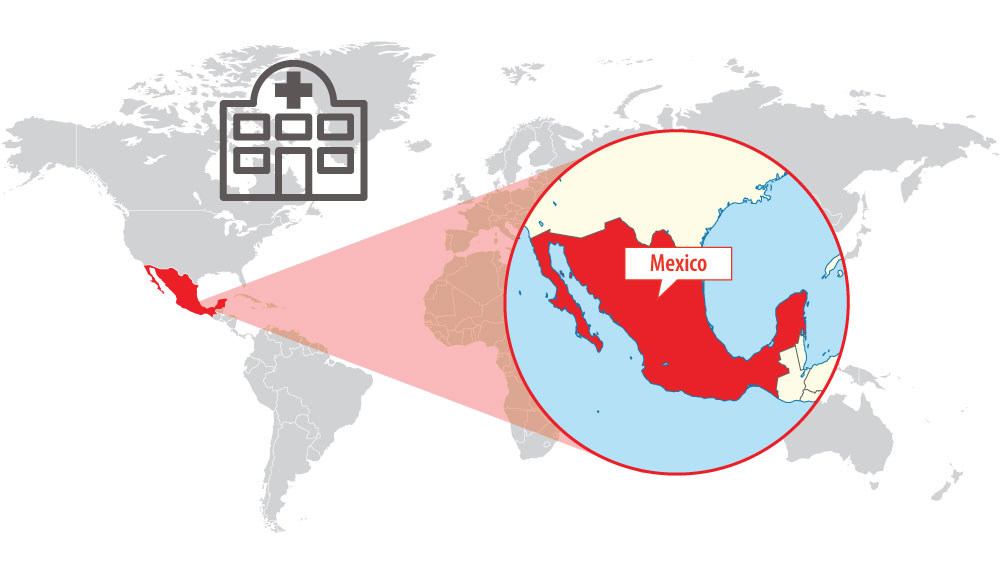
Localización de México
Ante esta demanda social, el holding mexicano Horkest ofrece servicios globales relacionados con la Fisioterapia a través de cuatro unidades de negocio. En cuanto a la formación de futuros profesionales, IPETH cuenta con una institución especializada en la formación de fisioterapeutas en México y América Latina en Puebla, Tlalpan, Tlalnepantla y Guatemala. También ofrecen servicios de rehabilitación a través de Recovery, la red de Clínicas de Rehabilitación y Medicina Deportiva en Puebla, Tlalnepantla, Tlaxcala y Orizaba. Otra de las filiales del grupo, Kinnov, desarrolla innovación tecnológica y equipamiento para la rehabilitación física y el cuidado de la salud. Y por último, el holding desarrolla una importante actividad solidaria a favor de las personas con discapacidad a través de la Fundación HUMA.
El área de innovación es transversal a todo el grupo empresarial desarrollando nuevas tecnologías para el resto de las zonas. Como explica Erik Díaz, en Kinnov descubrieron la existencia de MySignals gracias a la actividad de vigilancia tecnológica llevada a cabo por sus profesionales. "Buscábamos Dispositivos IoT aplicados a la salud con el objetivo de llevar la rehabilitación a las clínicas sociales en lugares de difícil acceso a los servicios sanitarios", dice.
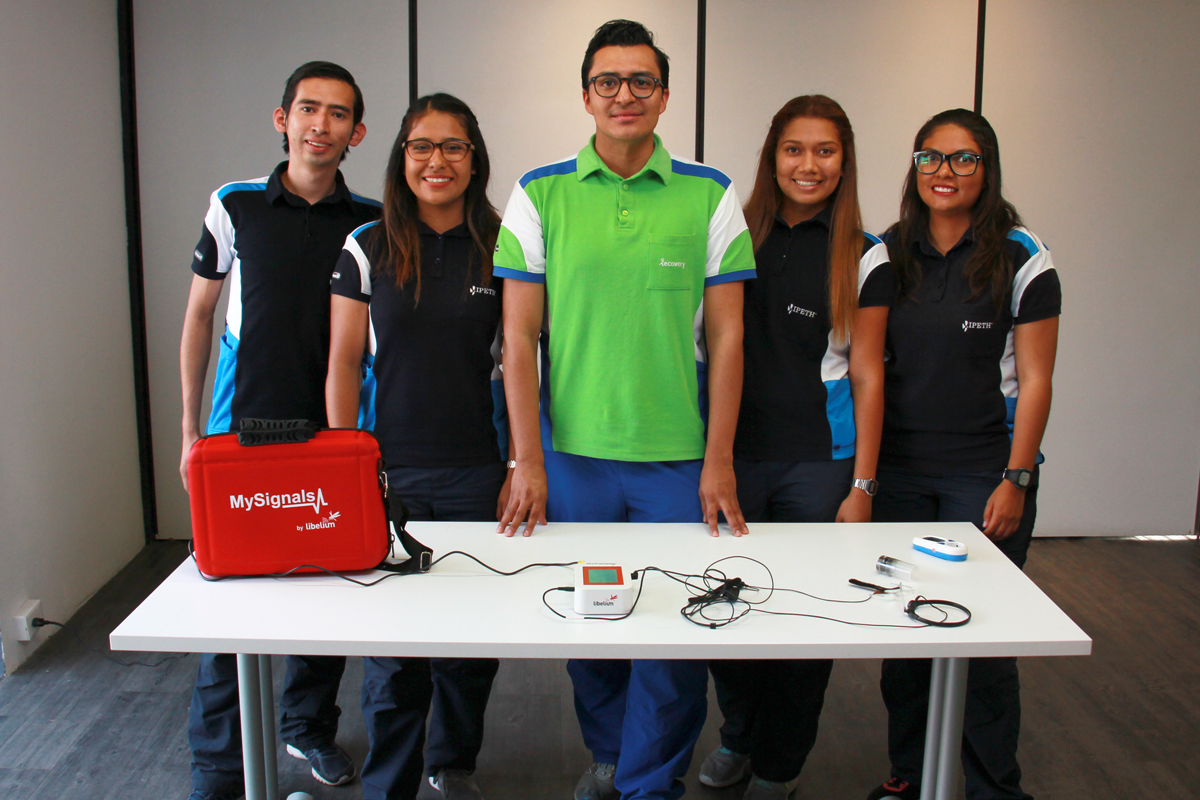
Equipo de investigación del IPETH
El objetivo de Kinnov para este proyecto es aumentar la cobertura de los servicios ofrecidos por los fisioterapeutas y utilizar las tecnologías de medicina a distancia para ganar en eficacia. "Esto nos hizo empezar a buscar soluciones y desarrollar este proyecto que nos permite conectar al paciente con la plataforma MySignals. Nos parece muy útil ya que MySignals los datos de los sensores pueden descargarse a través de la API a la historia clínica directa del paciente", dice.
El equipo de investigación de Kinnov utiliza actualmente MySignals en un proyecto en el que también participan otros sensores necesarios para el proceso fisioterapéutico. Conocedor de las necesidades actuales del área de Rehabilitación Física, Kinnov ofrece equipos, productos y servicios tecnológicos e innovadores, con el fin de proporcionar a médicos, fisioterapeutas, especialistas y promotores de la salud herramientas que ayudan a mejorar la calidad de vida de los pacientes.
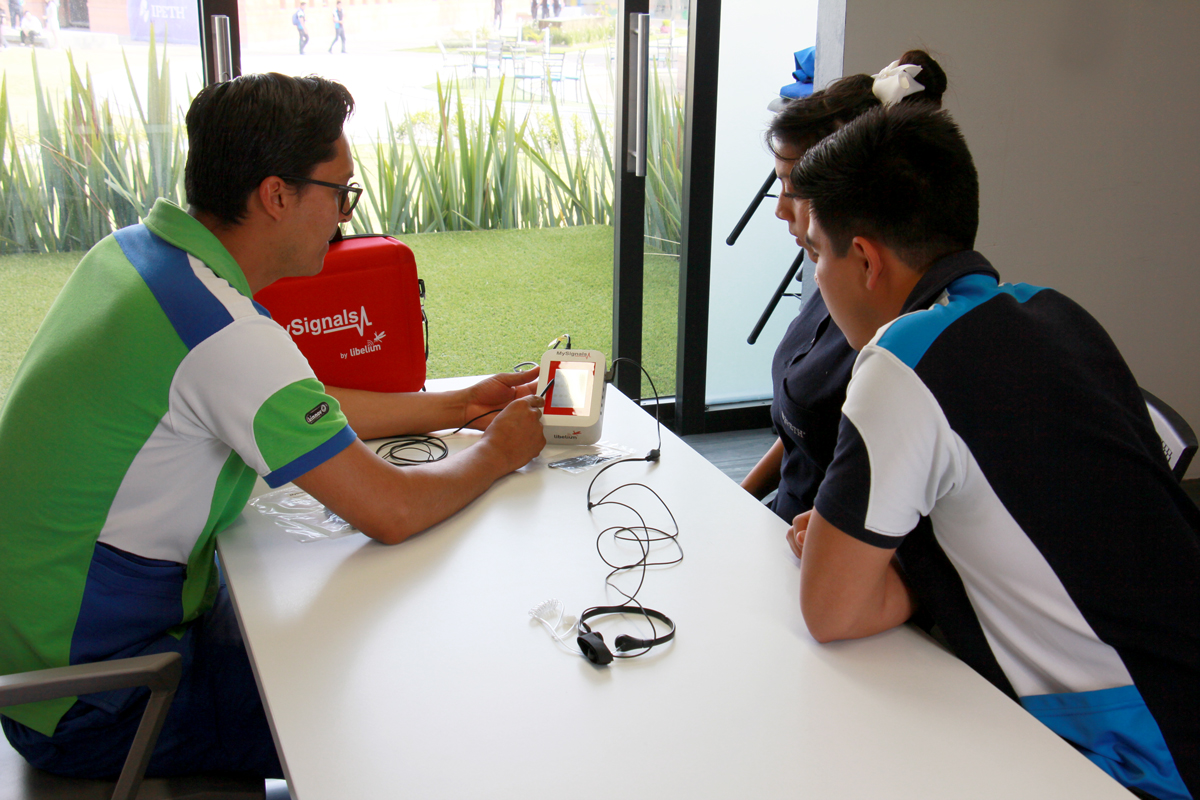
El equipo de investigación del IPETH trabaja con MySignals, la plataforma de sanidad electrónica de Libelium
Jorge Bustamante, licenciado en Fisioterapia por el IPETH, lidera el equipo de investigación que está realizando ensayos clínicos para utilizar MySignals con pacientes que reciben tratamiento fisioterapéutico. Utilizan diferentes Sensores MySignals evaluar los resultados de cuatro áreas de rehabilitación: Deportiva, Ortopédica, Pulmonar y Neurológica.
La investigación se está llevando a cabo en un grupo de 175 pacientes: 50 del área deportiva para analizar patologías relacionadas con esguince de tobillo; 50 del área ortopédica para analizar mejora del rendimiento en futbolistas universitarios; 50 pacientes del área pulmonar con EPOC (Enfermedad Pulmonar Obstructiva Crónica); y 25 pacientes del área neurológica con Parálisis cerebral espástica.
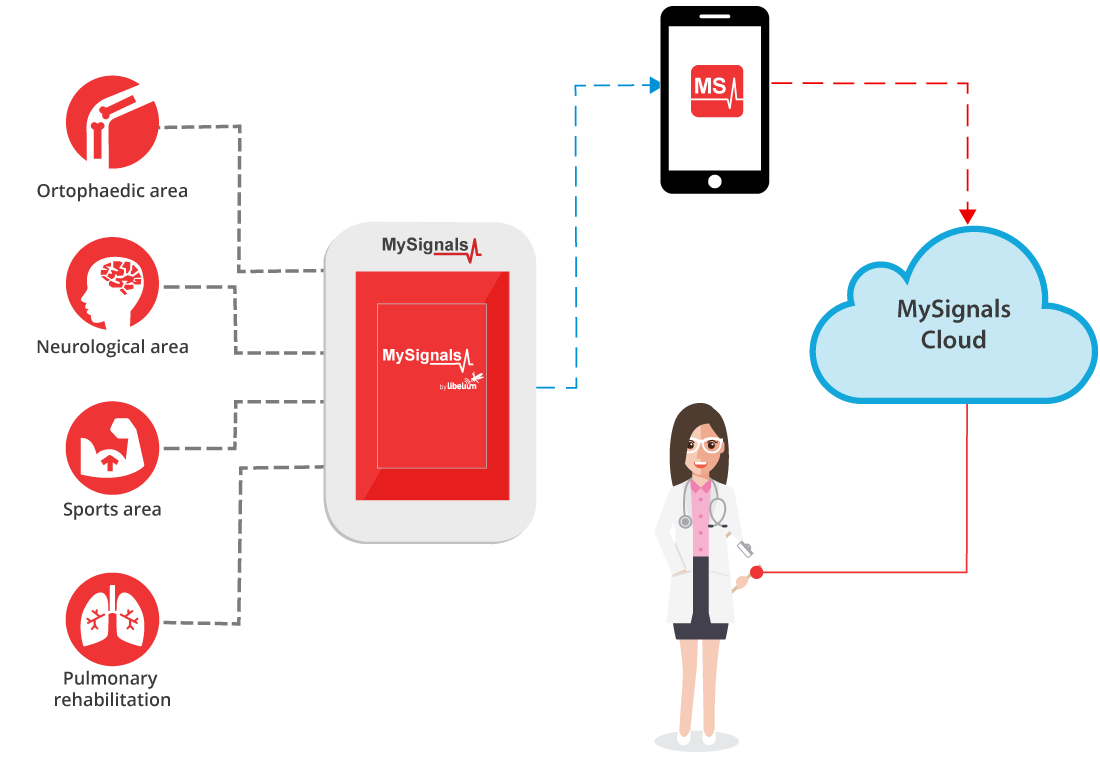
Esquema del proyecto de rehabilitación de Kinnov realizado por el equipo de investigación del IPETH
El objetivo de esta investigación es concluir qué sensores añaden valor al diagnóstico clínico del paciente.
En el área de OrtopediaEl estudio, dirigido por Carla Daniela López Carrillo, tiene por objeto determinar la inestabilidad del paciente mediante pruebas propioceptivas tras sufrir un esguince de tobillo. Se utilizan sensores de presión arterial, respuesta galvánica (para detectar el cambio de calor y electricidad que transmiten los nervios), acelerómetro (para medir la velocidad corporal) y electromiograma (contracciones musculares).
En el área de DeportesLa investigación, dirigida por Lenis Aidee Solis Roque, tiene por objeto mejorar el rendimiento físico del deportista midiendo la estabilidad, la fuerza y la potencia. Los sensores utilizados son acelerómetro, giroscopio (mejora muscular), actígrafo (frecuencia cardiaca), cronómetro (tiempo), sensor cinético (gestos motores), calorímetro (calorías consumidas), espiroergometría (para examinar el efecto de la ingesta de CF), electromiograma y dinamómetro isocinético (fuerza muscular).
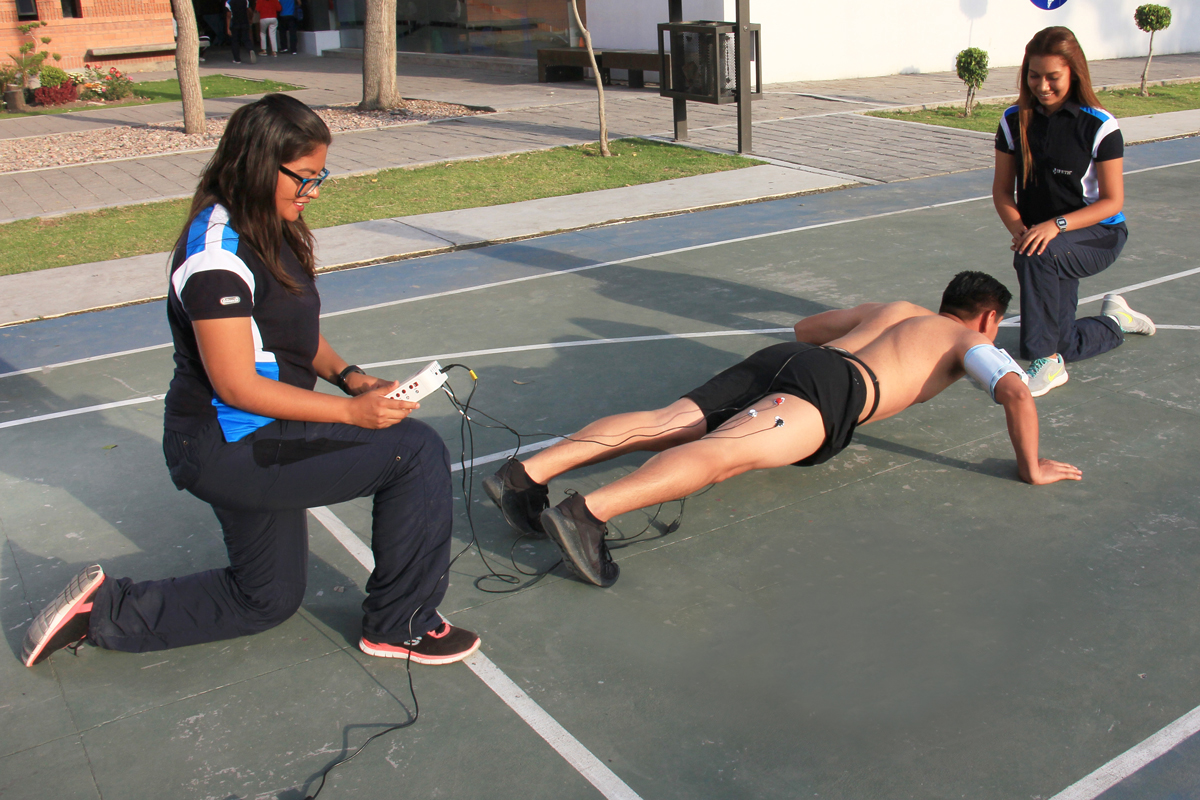
Plataforma MySignals eHealth para controlar el rendimiento de los deportistas
En el ámbito de la rehabilitación pulmonarAdrián Romero Ríos, pretende demostrar la eficacia de un tratamiento fisioterapéutico. para mejorar la ventilación y los niveles musculares en pacientes con EPOC. Para ello se utilizan los siguientes sensores: espirómetro (capacidad pulmonar); flujo de aire para mostrar posibles cambios en el curso del tratamiento; SPO2 (mide el porcentaje de oxígeno transportado en la sangre); presión arterial (mide la hipertensión); y electromiograma para mostrar el trabajo de la musculatura respiratoria, incluido un análisis de la musculatura de las extremidades inferiores que, en pacientes con EPOC, puede estar afectada.
Por fin, en el área neurológica, el estudio dirigido por Cecilia Magallanes González, tiene previsto actuar con 25 pacientes con Parálisis Cerebral Espástica con el objetivo de disponer de resultados cuantificables de los movimientos y compensaciones que realizan los pacientes en el momento de iniciar el movimiento.
La espasticidad es una hiperactividad del arco reflejo miotático que conlleva el llamado síndrome piramidal, que se asocia a parálisis y pérdida selectiva del movimiento. La espasticidad presenta síntomas como hipertonía muscular, hiperreflexia e hiperactividad cinética voluntaria.
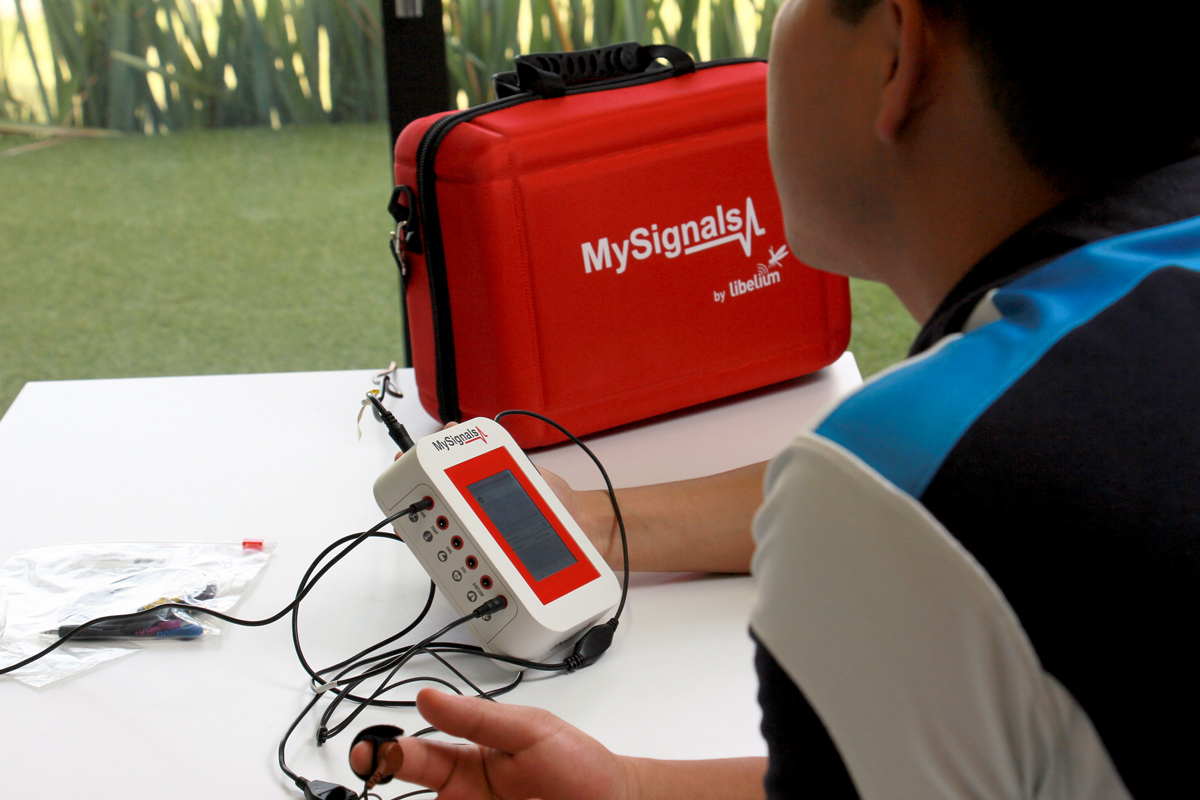
Sensor GSR que funciona con la plataforma MySignals SW eHealth
Utilizando MySignals y un conjunto de sensores como aceleración, electromiograma, pulsioxímetro y respuesta galvánica, se realiza el estudio definir en cada paciente el nivel de parálisis cerebral según el Sistema de Clasificación de las Funciones Motoras (GMFCS). La escala de niveles establecida por el GMFCS se mide de forma cuantificable para cada uno de los parámetros a revisar. De esta forma, se puede ofrecer un mejor diagnóstico de cada paciente para mostrar cuáles son las alteraciones en su locomoción.
El procedimiento de este estudio se realiza en varias fases con el paciente
En el primera etapa, a evaluación postural se lleva a cabo realizando un registro fotográfico y de vídeo del uso de los sensores para evaluar la eficacia de los movimientos que se realizan en ese momento. El acelerómetro se coloca en la columna cervical, el electromiograma se coloca en el músculo recto abdominal, el pulsioxímetro se utiliza antes, durante y después de la actividad, y el sensor de respuesta galvánica mide la sudoración antes de la actividad.
La segunda fase evalúa función motora gruesa y movimientos de decúbito y rotación, sentado, a cuatro patas, de rodillas, de pie y marcha. El acelerómetro mide los movimientos involuntarios que se realizan, el electromiograma mide el comportamiento del recto abdominal en el momento de los movimientos, el pulsioxímetro indica la cantidad de oxígeno en el momento del esfuerzo y el sensor de respuesta galvánica muestra si el paciente está en fase de estrés.
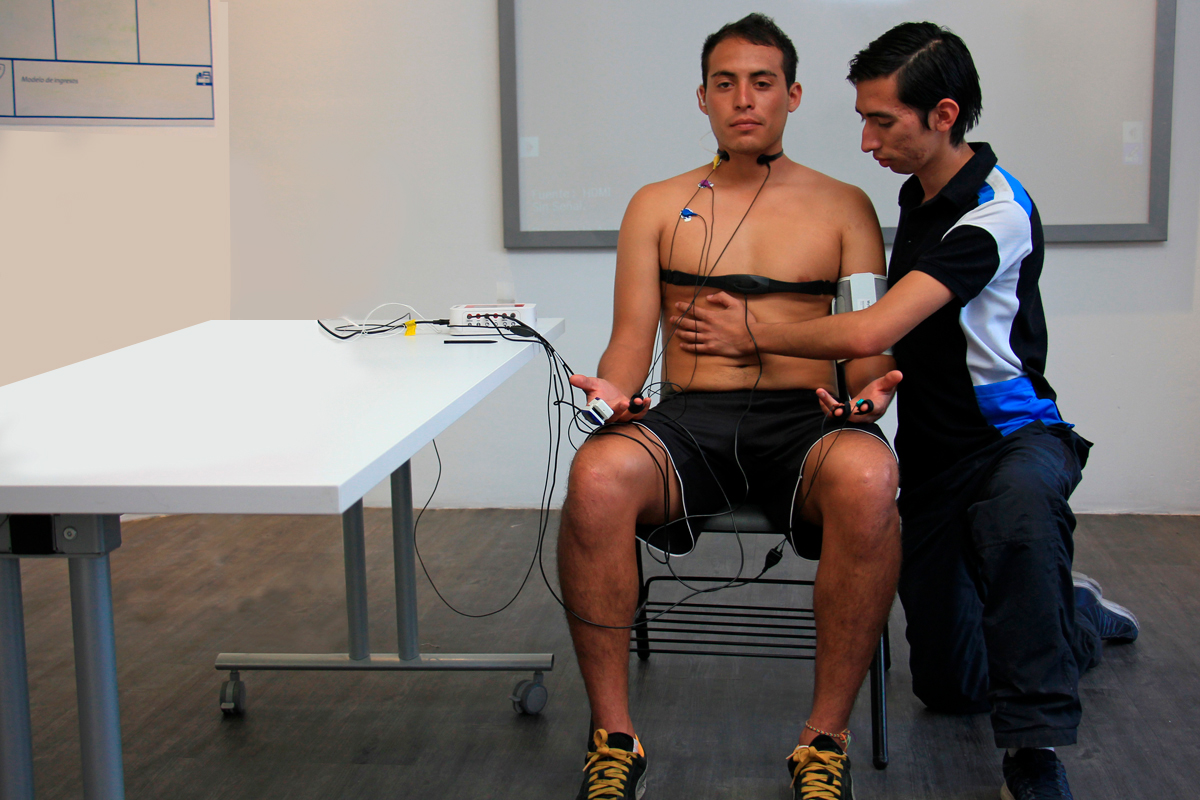
Evaluación del paciente mediante MySignals
La tercera fase evalúa el postura del paciente. Se utilizan ejercicios de disociación, alineación, estabilidad, propiocepción y posicionamiento del centro de gravedad para restablecer el movimiento del cuerpo humano. Se inicia de forma voluntaria, haciendo hincapié en la sedestación, las transferencias y la movilidad.
En el cuarta faseEl evaluación postural y de la motricidad gruesa se realiza de nuevo, teniendo en cuenta los datos anteriores obtenidos en la evaluación de los movimientos y rotaciones en decúbito, sentado, a cuatro patas, de rodillas, de pie y de la marcha.
Este proyecto de IoT contribuye a alcanzar los siguientes Objetivos de Desarrollo Sostenible: Objetivos de Desarrollo Sostenible:
Si desea más información sobre nuestros productos, póngase en contacto con el Departamento de ventas de Libelium.
Si desea descargar el artículo en español, por favor pulse aquí.
Más información:
Referencias:
Descubre nuestra Kits de salud electrónica MySignals en El mercado de la IO.
Descárguelo en English🇬🇧 y Spanish🇪🇸 directamente en su bandeja de entrada.
Descargar*TÉRMINOS Y CONDICIONES PARA UTILIZAR EL CONTENIDO DE LIBELIUM. Libelium es el propietario de todas las imágenes proporcionadas en el sitio web y sólo pueden utilizarse citando la fuente. Cualquier vídeo, fotografía, diagrama, infografía o logotipo no puede ser utilizado o transformado sin la autorización de Libelium. Puede solicitar los archivos en alta resolución para publicarlos en su web o insertarlos en folletos de marketing siempre utilizando el logo de Libelium y enlazando con la web de Libelium. Si va a publicar el artículo en una web o medio de comunicación o en un libro blanco o estudio de investigación, deberá hacerlo incluyendo todas las referencias y mencionando a Libelium como fuente del contenido. © Libelium Comunicaciones Distribuidas S.L. - www.libelium.com
Mantente al día en IoT
Únete a la Comunidad Libelium y recibe las últimas noticias sobre IoT, eventos importantes, proyectos, casos de éxito y mucho más en su inbox.
Más de 18 años de experiencia en IoT.


















Soluciones IoT para
Productos IoT
Compañía
© Libelium Comunicaciones Distribuidas S. L. | Términos y condiciones | Política de privacidad | Política de Cookies | Política de Seguridad | Canal del informante